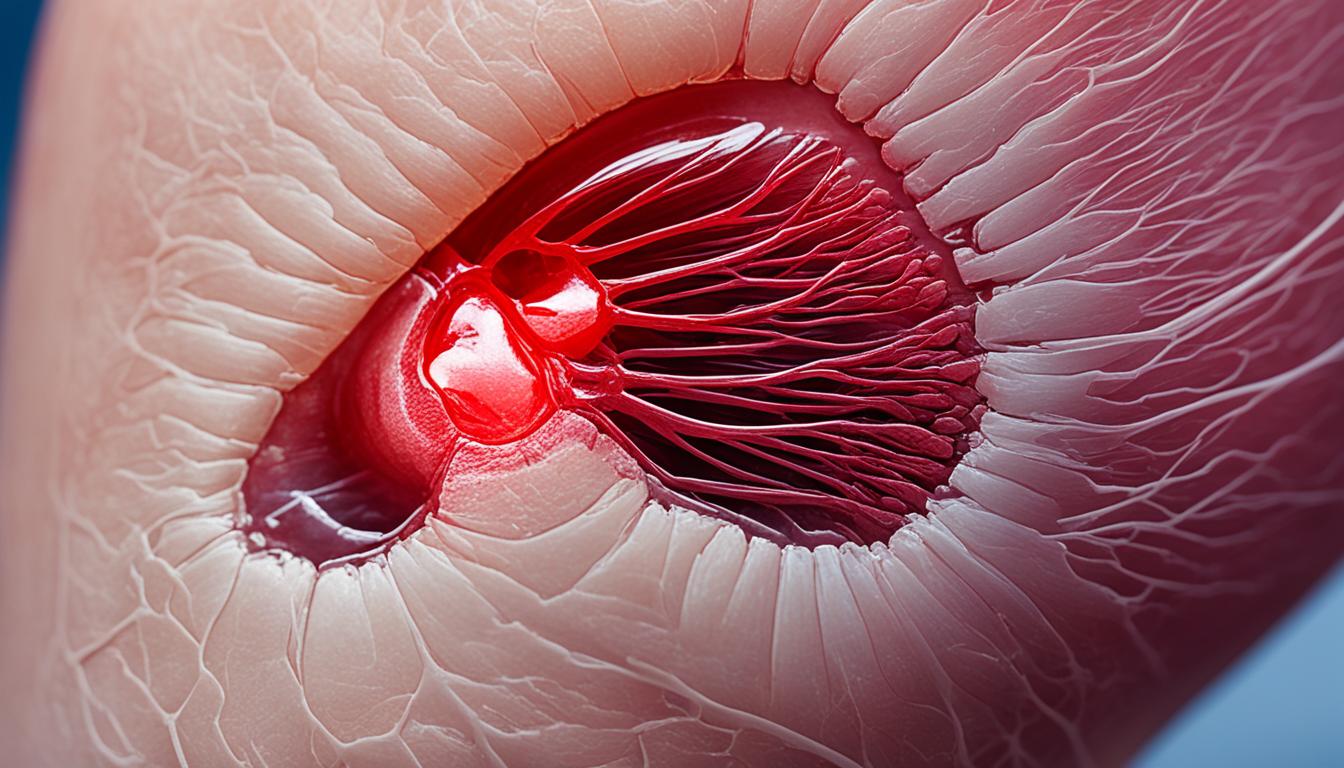Tendinitis patellar is also called patellar tendonitis or jumper’s knee. It’s a common problem from overuse. Activities like running, jumping, and kicking can cause it.
Overuse leads to patellar tendonitis. This can cause tiny tears in the tendon. Other reasons include knee impacts, weak thighs and knees, and sudden changes in workouts.
The signs are pain, tenderness, swelling, and a crackling sound from movement. Without treatment, it can get worse. Sometimes, it might need surgery to fix.
But, stem cell therapy is a new way to treat it without surgery. It uses stem cells from amniotic tissue. These cells help repair tissue and reduce swelling, easing the pain.
To prevent this, start activities slowly and build up. Also, work on flexibility and muscle balance. And, keep the knee safe during sports.
Key Takeaways:
- Jumper’s knee is common and causes pain, weakness, and swelling.
- It happens because of overuse, injury, and muscle problems.
- Symptoms include pain, swelling, and a strange sound when moving.
- Stem cell therapy is a non-surgical option that can reduce pain and heal.
- To prevent this, start activities slowly and work on flexibility and muscle strength.
Keep reading to know more about stem cell therapy and other healing methods for jumper’s knee.
Stem Cell Therapy for Patellar Tendonitis
Stem cell therapy is an exciting way to treat patellar tendonitis, easing pain and aiding in healing without surgery. Stem cells are taken from amniotic tissue and injected into the hurt area. These cells can repair damaged tissue and lower inflammation, which helps reduce knee pain from the condition.
The Spine Correction Center offers this advanced therapy. We use it alongside rehab to fix what’s causing the injury and boost knee function in the long run.
For patellar tendonitis, there are also non-surgical options. Physical therapy enhances muscle strength and flexibility. Braces or taping supports the knee, while hot and cold therapy reduces pain and swelling. Doctors might also recommend NSAIDs to help with pain and swelling.
If these methods don’t work, surgery might be needed, though it’s rarely done. Surgeons can remove part of the inflamed tendon or fix a tear with a small camera. After surgery, rehab is vital for a smooth recovery.
Stem cell therapy brings hope to those with patellar tendonitis, offering a non-invasive way to ease pain, heal, and improve knee function. If you have knee pain or a patellar tendonitis diagnosis, reach out to the Spine Correction Center. We’ll discuss how stem cell therapy and other treatments can help you.
Patellar Tendinopathy: Regenerative Treatments and Surgical Options
Patellar tendinopathy or jumper’s knee can be treated effectively. There are various regenerative treatments to lessen pain and inflammation while speeding up healing. These methods include small surgeries like Micro-Fragmented Adipose Tissue (MFAT) Injections, Bone Marrow Aspirate Concentrate (BMAC) Injections, and Platelet-Rich Plasma (PRP) Therapy.
These treatments use the body’s natural ability to heal up damaged areas. They have been proved as successful ways to stop pain and avoid surgeries. Studies show that MFAT, BMAC, and PRP injections are very good at cutting down the pain.
For patellar tendinopathy, non-surgical solutions are also there. This might involve changing how you do certain activities, specific exercises, and physical therapy. Sometimes, surgery is needed, especially when other treatments haven’t worked or if a big tear has happened in the tendon. Surgery can often be done with a tiny camera to help the surgeon see inside the joint, reducing the need for big cuts. After surgery, there’s a period to recover and get back to normal activities.
If you’re facing patellar tendinopathy, it’s key to see a specialist at Jorja Healthcare Regenerative Treatments. They will check how bad your condition is and suggest the best treatment. With the many options for regenerative and surgical care, you can find relief from patellar tendinopathy.

